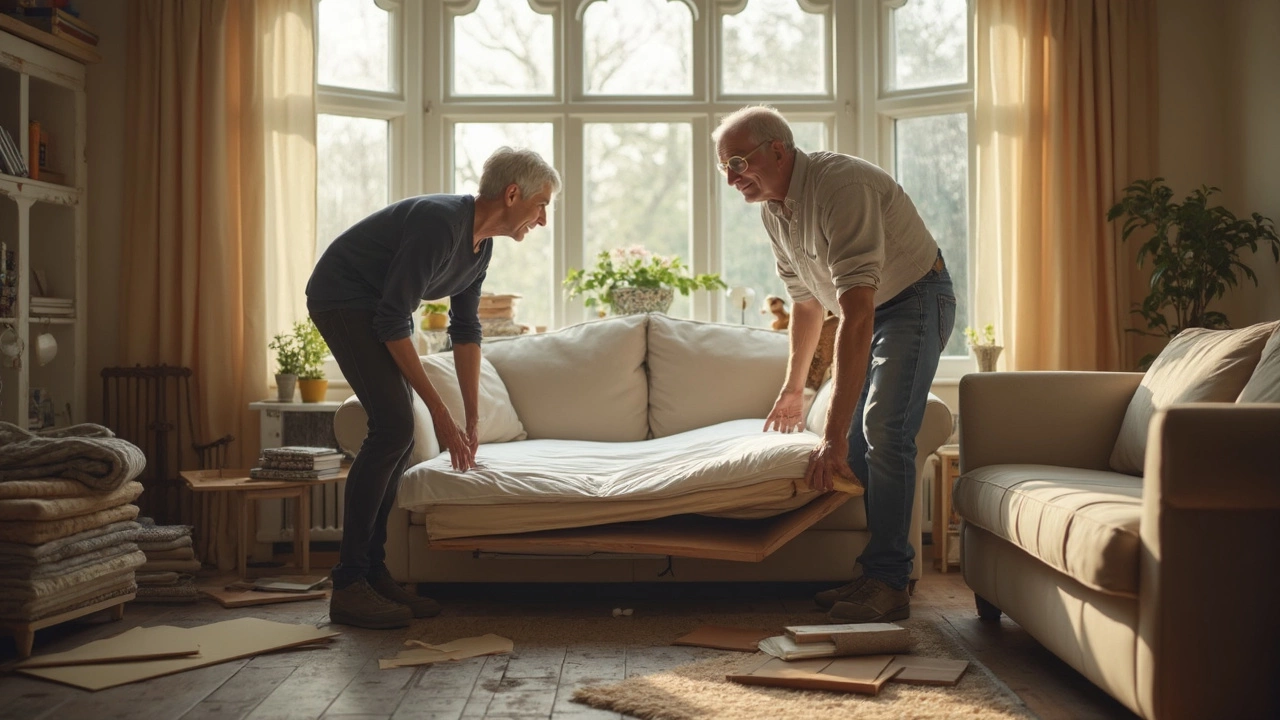Sofa Maintenance: Simple Tips to Keep Your Couch Fresh
Your sofa takes a lot of wear – family evenings, pet cuddles, accidental spills. A little routine care can stop those everyday hits from turning your favorite seat into a tired looking piece. Below are the no‑fuss steps you can add to your weekly chores.
Regular cleaning routine
Start with a vacuum that has an upholstery attachment. Run it over the whole surface once a week to lift dust, pet hair, and crumbs. If the couch has removable cushions, take them off and vacuum the underside too – that area gathers grime fast.
For everyday spills, grab a clean white cloth and blot, don’t rub. Blotting lifts the liquid without pushing it deeper into the fabric. Have a mild dish‑soap solution handy (a few drops in warm water). Dip the cloth, wring it out, and gently dab the spot. Rinse with a damp cloth and let it air dry.
Rotate cushions every two to three months. This evens out the wear and keeps the springs from sagging on one side. If you have a leather sofa, dust it with a dry microfiber cloth weekly, then give it a quick wipe with a leather‑specific cleaner every month.
Protecting different materials
Fabric sofas benefit from a fabric protector spray. Choose one labelled safe for your upholstery, spray lightly, and let it dry. The spray creates a barrier that makes future stains easier to clean. Test a hidden spot first to make sure the color doesn’t change.
Leather needs a conditioner about twice a year. The conditioner restores oils that dry out from sunlight or cleaning. Apply a thin layer with a soft cloth, let it soak in, then buff off any excess. Avoid harsh chemicals, sunscreen, or any product with alcohol.
Microfiber feels soft but can attract oil. Sprinkle a little baking soda on the surface, let it sit for 15 minutes, then vacuum. It lifts oily residues without harming the weave.
Keep the sofa out of direct sunlight. UV rays fade colors and dry out leather. If you can’t move the couch, use curtains or a sheer throw to shield it during the brightest parts of the day.
Lastly, check the frame and legs every six months. Tighten any loose screws and make sure the legs are stable. A wobbly base can stress the springs and cause sagging over time.
Following these easy habits means your sofa will stay comfortable and look great for years. A little effort now saves you from costly replacements later, and you’ll always have a cozy spot for family, friends, and that favorite TV show.
Stop Sofa Bed Sagging: Easy Fixes and Tips
Sagging sofa beds are a common headache, but they're not a lost cause. This article breaks down why sleeper sofas lose their support and offers straightforward solutions you can try right now. Learn quick fixes for short-term relief and smart upgrades for lasting comfort. The tips are simple, affordable, and use stuff you might already have at home. Don’t toss your old sofa bed—bring it back to life with these practical steps.
MoreHow Long Should the Average Sofa Last? Practical Guide to Sofa Lifespan
Wondering how long your sofa is supposed to last before it starts sagging or creaking? This article breaks down what impacts sofa lifespan, from build quality to daily habits. You’ll get tips on picking a durable model and signs that tell you it’s time for an upgrade. Get real numbers and practical advice you can actually use. It’s all about getting the most life out of your couch without the guesswork.
More

